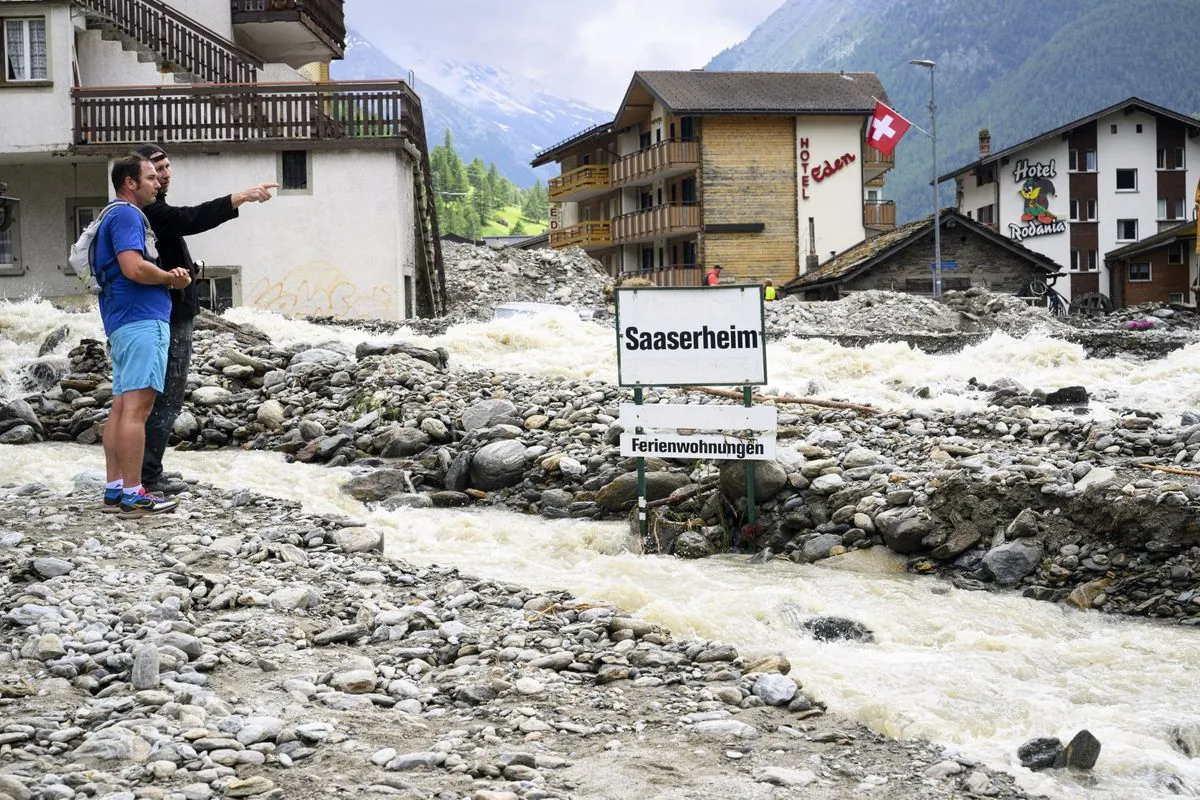Record Rainfall Causes Havoc in Austria's Alpine Regions and Vienna
Heavy rains in Austria led to severe flooding, causing damage and transport disruptions in Alpine areas and Vienna. A woman was critically injured, while officials work to address the aftermath of the extreme weather event.

Extreme precipitation has resulted in significant flooding across Austria's Alpine regions and parts of Vienna, causing extensive damage and disrupting transportation networks. The weekend of August 18, 2024, saw unprecedented rainfall, particularly affecting the capital city and popular ski destinations.
In the renowned ski resort of St. Anton am Arlberg, located in Tyrol, torrents of muddy water swept vehicles through the streets, as evidenced by footage shared on social media platforms. St. Anton, often referred to as the "cradle of alpine skiing," is one of many areas in the Austrian Alps facing the brunt of these extreme weather conditions.

The situation in Vienna, Austria's capital and largest city with approximately 1.9 million residents, was equally dire. The Doebling district in northern Vienna recorded a staggering 110 liters of rain per square meter, setting a new record for August rainfall in the city. This extreme weather event saw a substantial portion of Vienna's average summer rainfall occurring within a single hour.
The intensity of the flooding in Vienna led to a critical incident where a woman was dragged under a bus by the force of the water in the Doebling area. Emergency services rushed her to the hospital in a critical condition. Fire services in the capital responded to over 450 calls on Saturday alone, addressing the chaos caused by the deluge.
Chancellor Karl Nehammer acknowledged the severity of the situation, stating on social media, "Heavy storms have done great damage in many parts of Austria." He expressed gratitude to the officials working tirelessly to mitigate the damage and restore normalcy.
The recent events highlight the vulnerability of both urban and Alpine regions to extreme weather. Austria, with about 62% of its territory covered by the Austrian Alps, has a long history of dealing with natural disasters, including floods and landslides. The country has implemented various flood protection measures over the years, but the intensity of recent events poses new challenges.
Climate experts warn that such extreme weather events may become more frequent and intense due to climate change, particularly in Alpine regions. This underscores the need for continued investment in resilient infrastructure and advanced weather forecasting systems.
Vienna, known for its high quality of life and consistently ranked as one of the world's most livable cities, faces unique challenges in managing urban flooding. The city's extensive public transportation system, including buses, trams, and an underground metro, was severely impacted by the floods. The Austrian Federal Railways (ÖBB), the country's main rail network operator, also reported significant disruptions.
While Vienna's sewer system, an engineering marvel built in the late 19th century, has served the city well, events like this test its capacity. The Austrian Central Institute for Meteorology and Geodynamics (ZAMG) continues to monitor the situation closely, providing crucial forecasts to aid in disaster management efforts.
As Austria grapples with the aftermath of this extreme weather event, the incident serves as a stark reminder of the ongoing need for climate adaptation strategies and robust disaster preparedness measures.
"Heavy storms have done great damage in many parts of Austria"
The recent flooding in Austria demonstrates the complex interplay between natural forces and human infrastructure, highlighting the importance of continued vigilance and adaptation in the face of changing climate patterns.


































